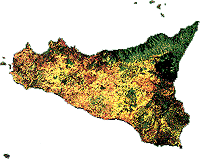
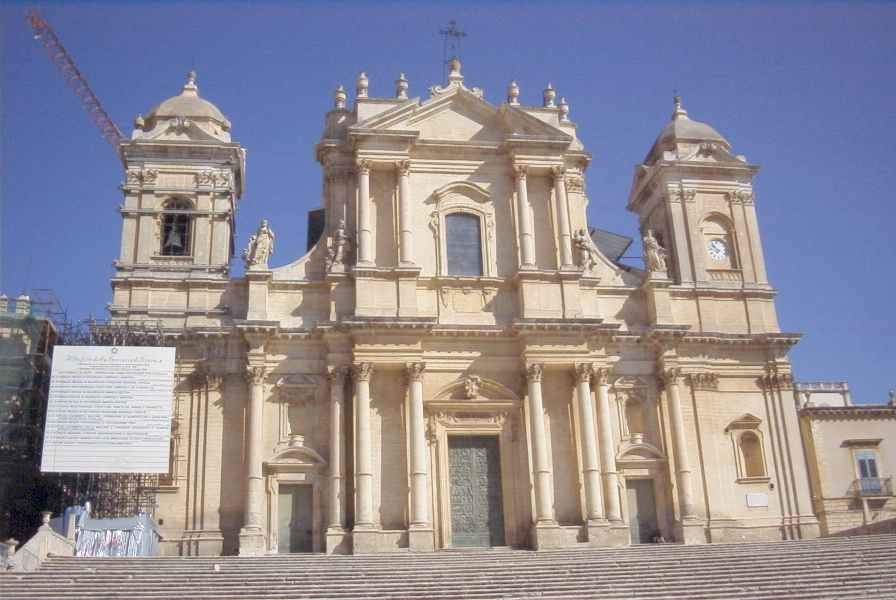 The cathedral in Noto -- Baroque
Band-Aids
The cathedral in Noto -- Baroque
Band-Aids
We stopped by Noto on our way to the Catania airport. Like Modica, Noto was pretty much destroyed and rebuilt after the 1693 earthquake, giving it the Baroque feel that it has. Technically it was a new town since the building took place several miles from the damaged older town. The Baroque requirements favored a new sight where the planners could lay out a linear plan with wide streets and right angles. The three major streets were even laid out on east-west axes so that the would be illuminated all day by sunlight. Therefore it was much easier for us to find our way than in Modica where the town was rebuilt clinging to the same mountainsides of the earthquake-trampled earlier town).

We entered the city backwards and walked to the gate above. Note the pelican at the top which should be replaced by a more needed symbol for present day Noto -- the building crane (or should I stick my neck out and say a rebuilding crane). To do it properly you should enter the Porta Reale above, built in 1838, and then onto Noto's main street which like almost every other small town Italian main street is named Corso Vittorio Emanuele. We ventured up and down the street (which splits three piazzas, each with its own church) and about a block on either side of it. On this bright Sunday, vehicular traffic was shut down.
One of the more impressive piazzas contains the cathedral shown at the top. We couldn't go into it because for some mysterious reason, the dome caved in in 1996 as seen in the picture below:
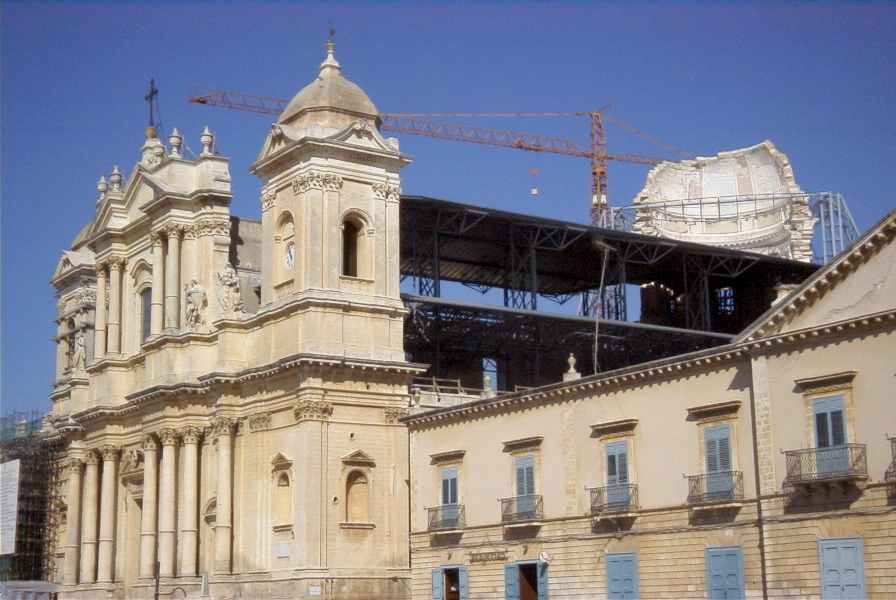
The causes of the implosion have yet to be established, but most likely the support had been damaged by the 1990 earthquake. A choir practice had just ended when the roof caved in on top of a coffin waiting for a funeral.
Between the Cathedral square and the arch lies another of Noto's five churches, San Francesco all'Immacolata designed by a man named Sinatra (but frankly not the singer). While quite simple on the outside, the inside of the church contains many works of art removed from the Franciscan church in the old town abandoned after the 1693 earthquake:
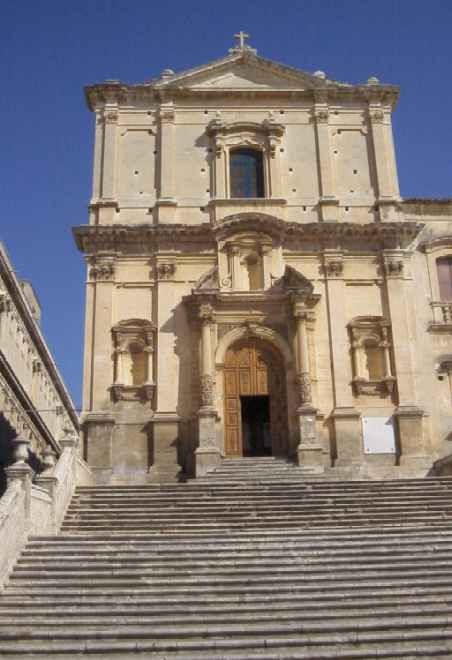
The street scene below gives somewhat of the feel for the town's baroque details, not only in the church at the end of the street (which turned out to be under refurbishment) but even in the town houses:
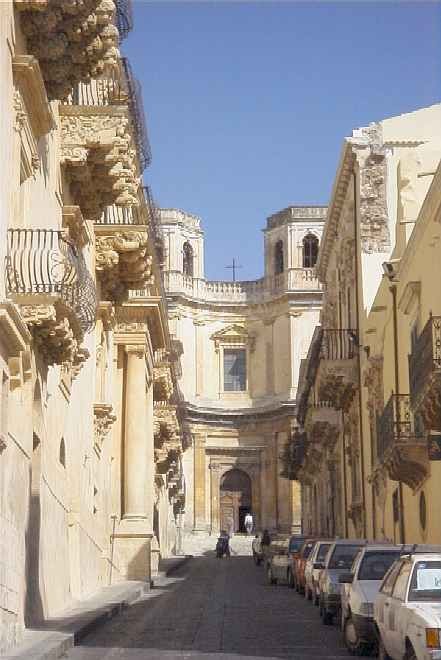
Here's a close-up of the Baroque balcony:

On the way back to the car, I couldn't pass up the opportunity to show a very popular form of transportation in Sicily, especially in the poorer areas (which is just about everywhere). These "trucks" appear to be flatbeds balanced atop motor scooters. We've seen families of 5 fit inside! To give you an idea of the size, I asked a former model (and half Sicilian) who coincidentally happened to be on the street with me to pose next to it. Given the lack of smile, I would say that she is not trying to audition for a job in the next auto show:
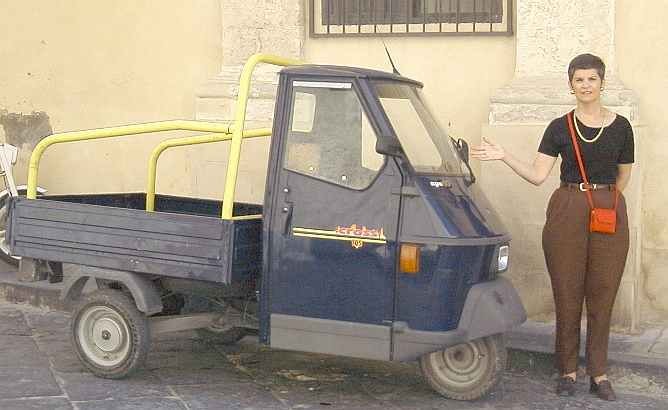
After that, we ventured into another church and then to an Italian bakery where we found a Sicilian delicacy we have not had since Pietrina's father would serve them in Detroit ages ago -- Rice balls. Since we had devoured another Sicilian culinary invention at the beginning of our trip, the cannoli, we felt a little like we had enjoyed the savory delights of the island.
Then it was back to the airport where I paid a ransom to give them back their rental car (someone at the hotel had given our front bumper a set of scratches the night before). And then off to Paris many hours later. (Of course, this is Europe, of course, the planes will be late).
All in all, it was quite a trip and we very much look forward to going back and seeing what we missed on our own. The Phoenicians, Carthaginians, Greeks, Romans, Arabs, Normans, and Spanish all got to stay a while, why can't we. (OK, the French got kicked out quickly but were Parisians, not French).
If you want to start at the beginning, click here to get to the Catania page. Otherwise, thanks for visiting. In two days we return to Italy with 6 days in the Florence and Tuscany region.
Where do you want to go today? Here's a few choices:
